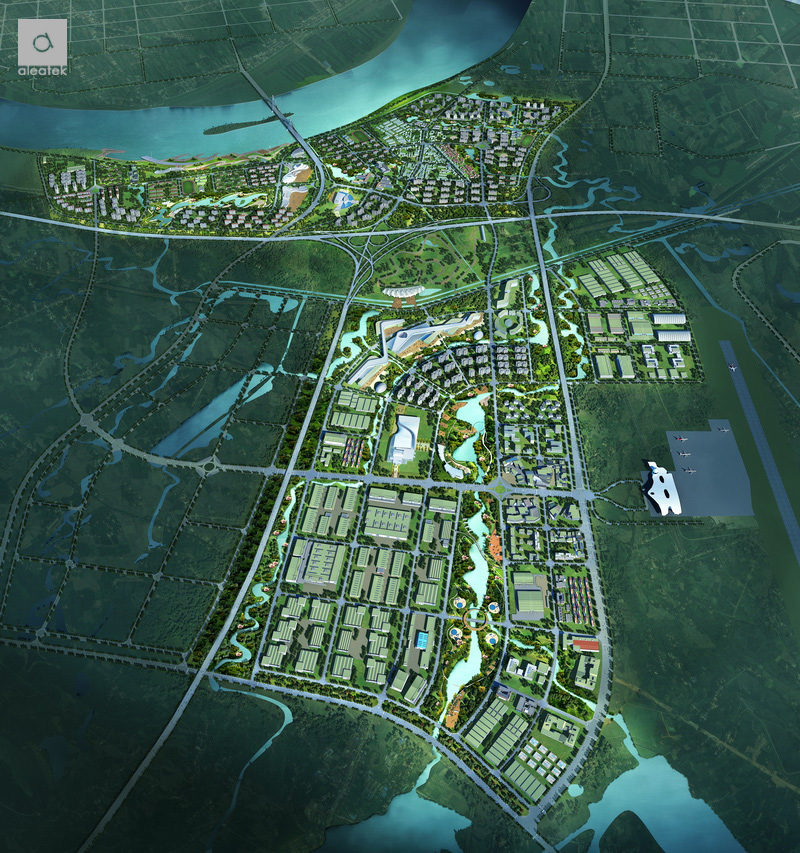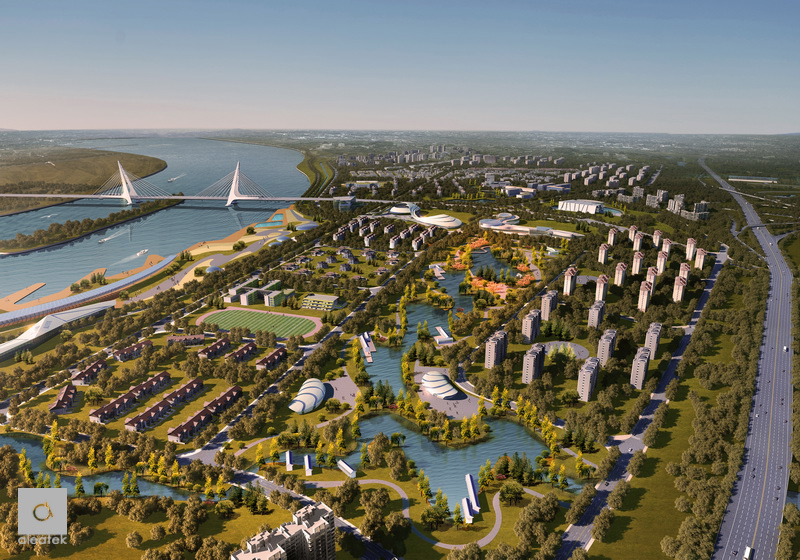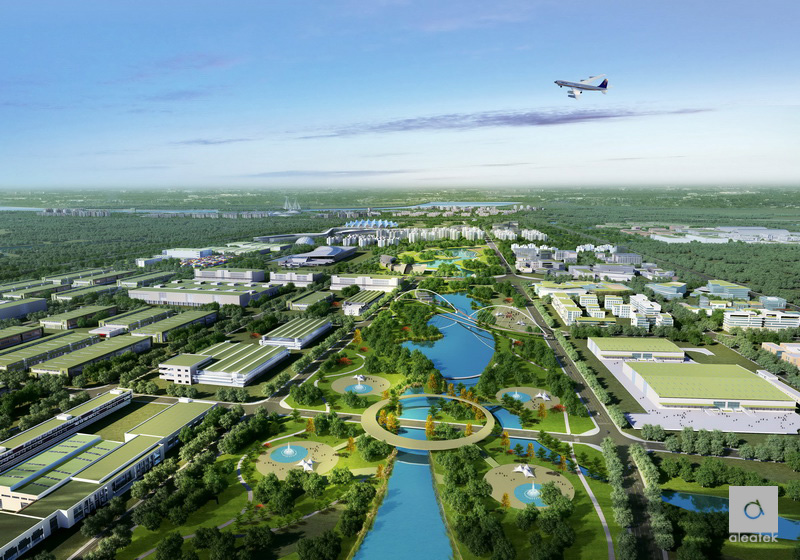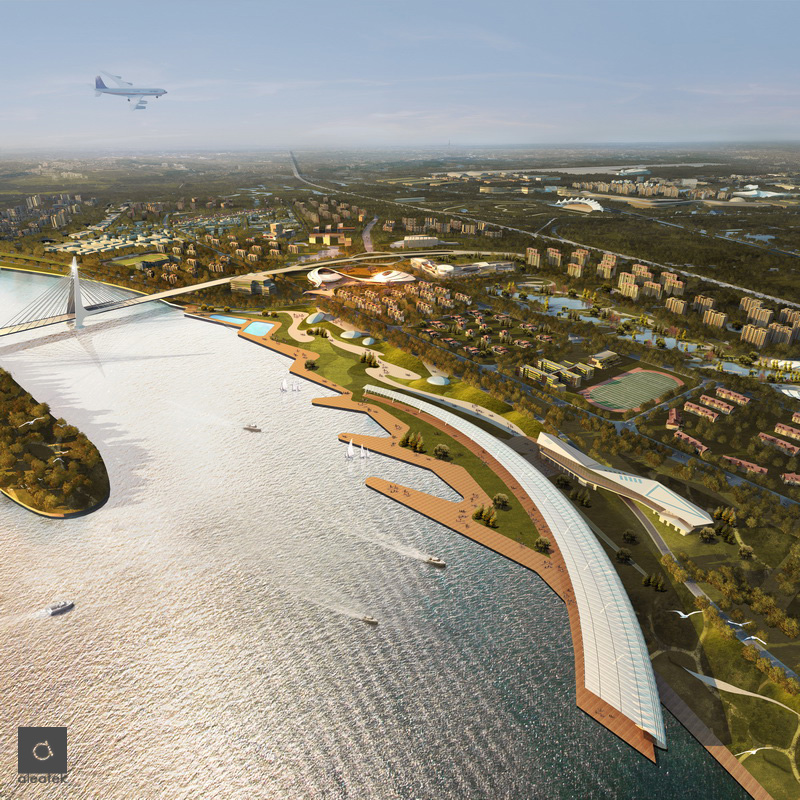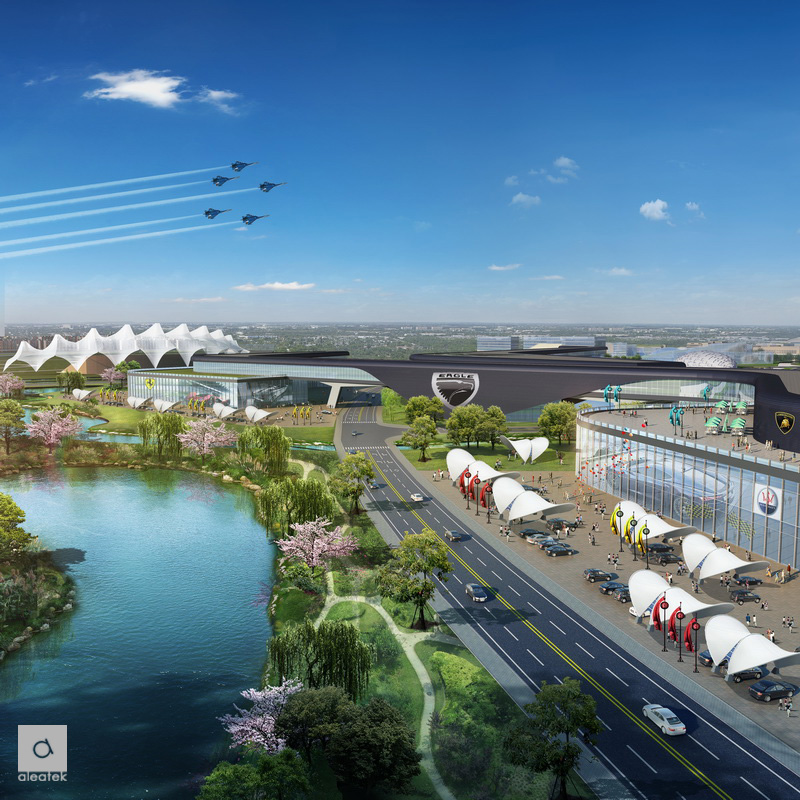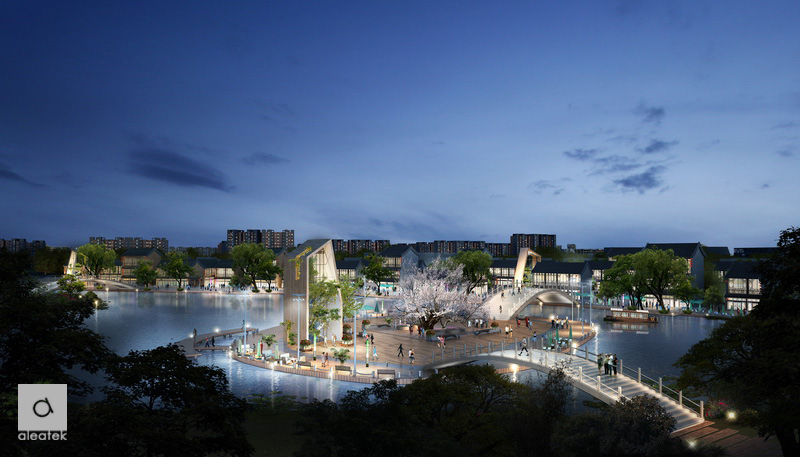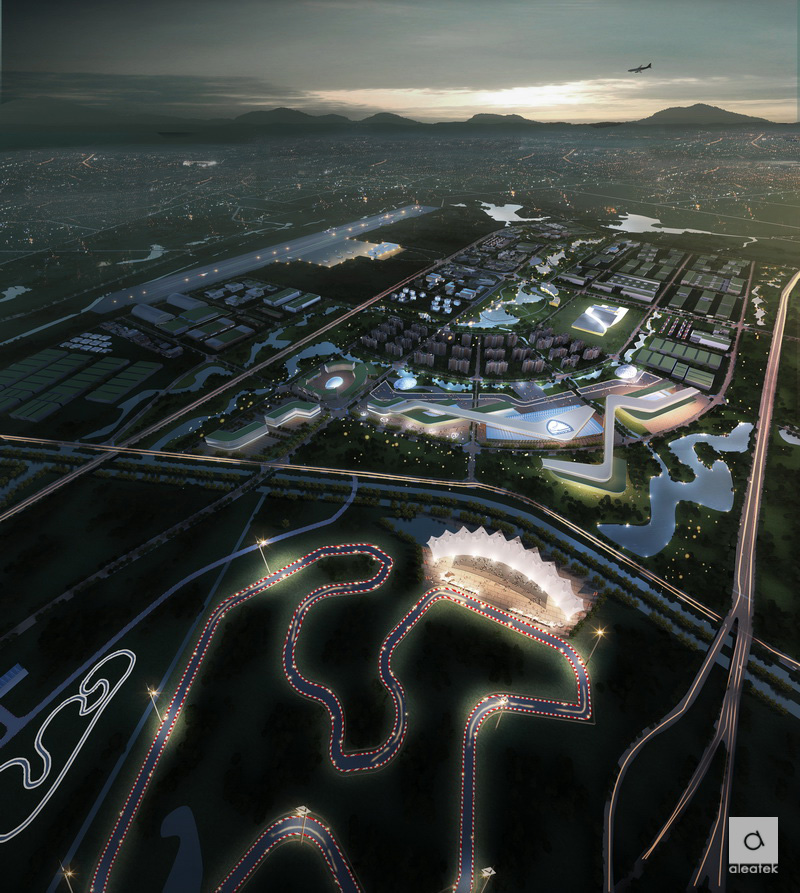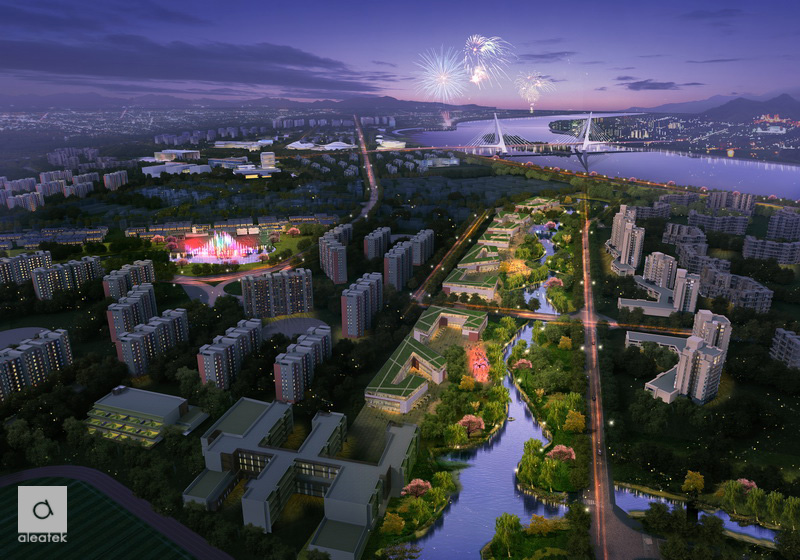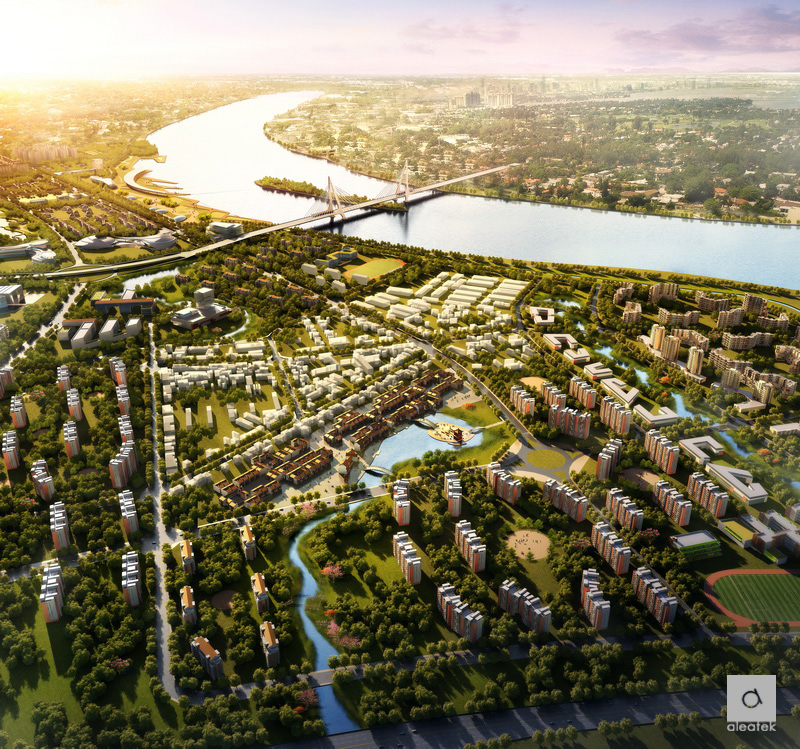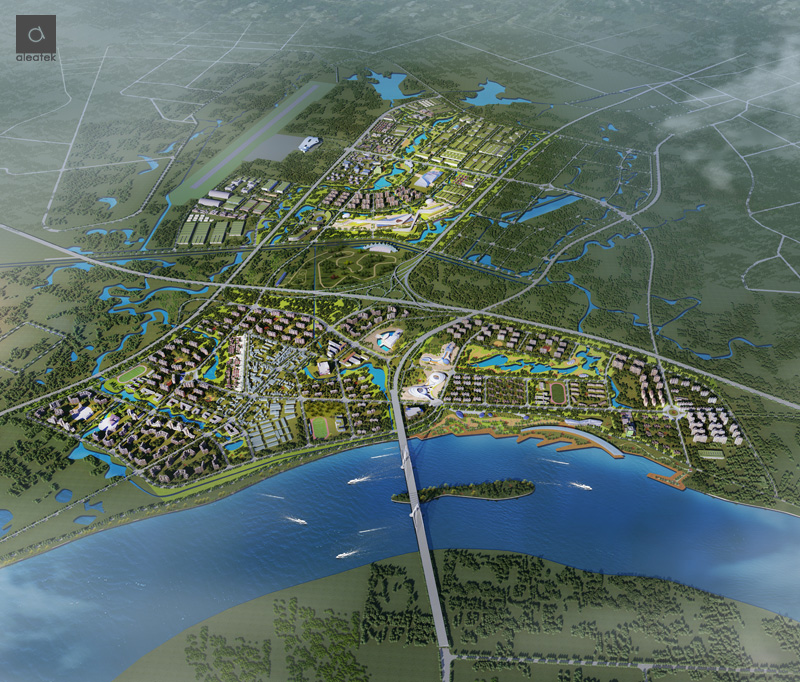Comprehensive Planning of Changde Airport City
March 14, 2017 in Master Plan, projects, Urban Plan
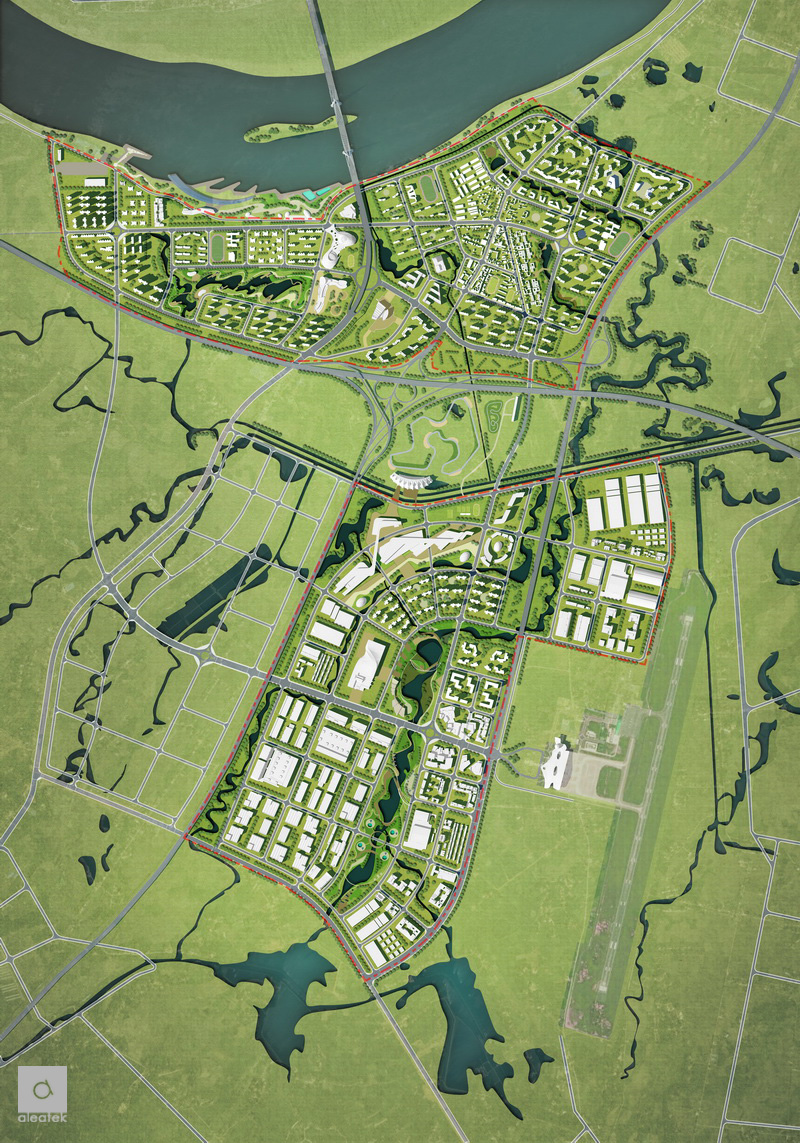
Location: Changde, Hunan, China
Function: Office, Exhibition, Test Lab, Hotel, Residence
Site area: 10 Km2
Cooperation with Tsing Hua Yuan, Shenzhen
Main concept and description of the project:
Relying on the existing industrial ecosystem of Jiangnan plate, Changde Airport City layout gets inspired by the intricate water system of the Binjiang Doumuhu town and integrates with it. The Planning strategy involves the creation of different district functions interconnected by a local traffic loop and crossed by a heavy logistic loop. Both systems are connected through intermodal hubs at urban and regional level. Strong efforts has been posed on the integration with the existing districts and the natural environment. Changde is one of the first cities in China to adopt the “Sponge City” policy in a form of pilot program. According with the principles of this policy, the plan considers the implementation of “Sustainable Drainage Systems” (SuDS), reduction of impermeable surfaces, guidelines for the rainwater collection and reuse.
Drainage systems can contribute to sustainable development and improve the places and spaces where we live, work and play by balancing the different opportunities and challenges that influence urban design and the development of communities. Approaches to manage surface water that take account of water quantity (flooding), water quality (pollution), biodiversity (wildlife and plants) and amenity are collectively referred to as Sustainable Drainage Systems. SuDS mimic nature and typically manage rainfall close to where it falls. SuDS can be designed to transport (convey) surface water, slow runoff down (attenuate) before it enters watercourses, they provide areas to store water in natural contours and can be used to allow water to soak (infiltrate) into the ground or evaporated from surface waterand lost or transpired from vegetation (known as evapotranspiration)
